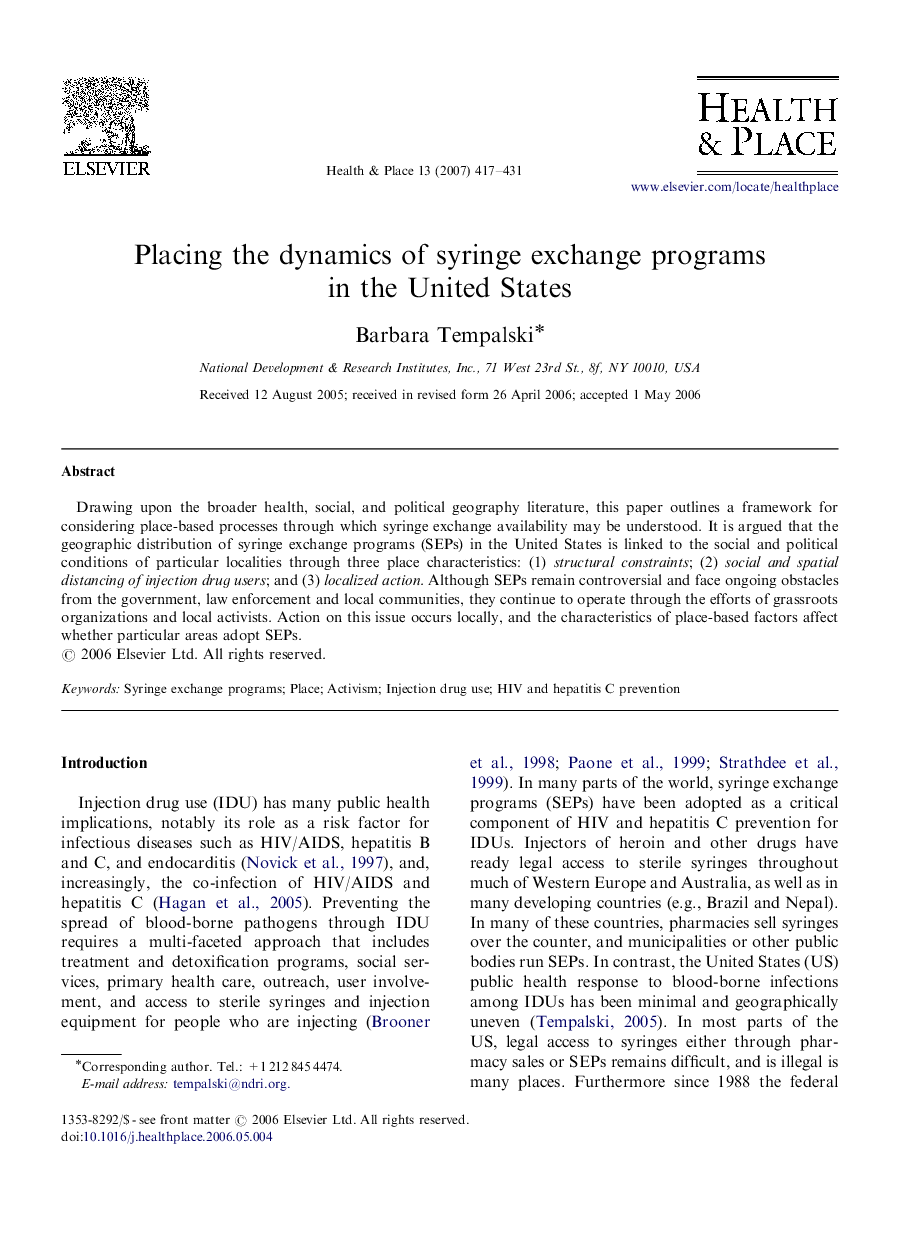| Article ID | Journal | Published Year | Pages | File Type |
|---|---|---|---|---|
| 1049034 | Health & Place | 2007 | 15 Pages |
Drawing upon the broader health, social, and political geography literature, this paper outlines a framework for considering place-based processes through which syringe exchange availability may be understood. It is argued that the geographic distribution of syringe exchange programs (SEPs) in the United States is linked to the social and political conditions of particular localities through three place characteristics: (1) structural constraints; (2) social and spatial distancing of injection drug users; and (3) localized action. Although SEPs remain controversial and face ongoing obstacles from the government, law enforcement and local communities, they continue to operate through the efforts of grassroots organizations and local activists. Action on this issue occurs locally, and the characteristics of place-based factors affect whether particular areas adopt SEPs.
